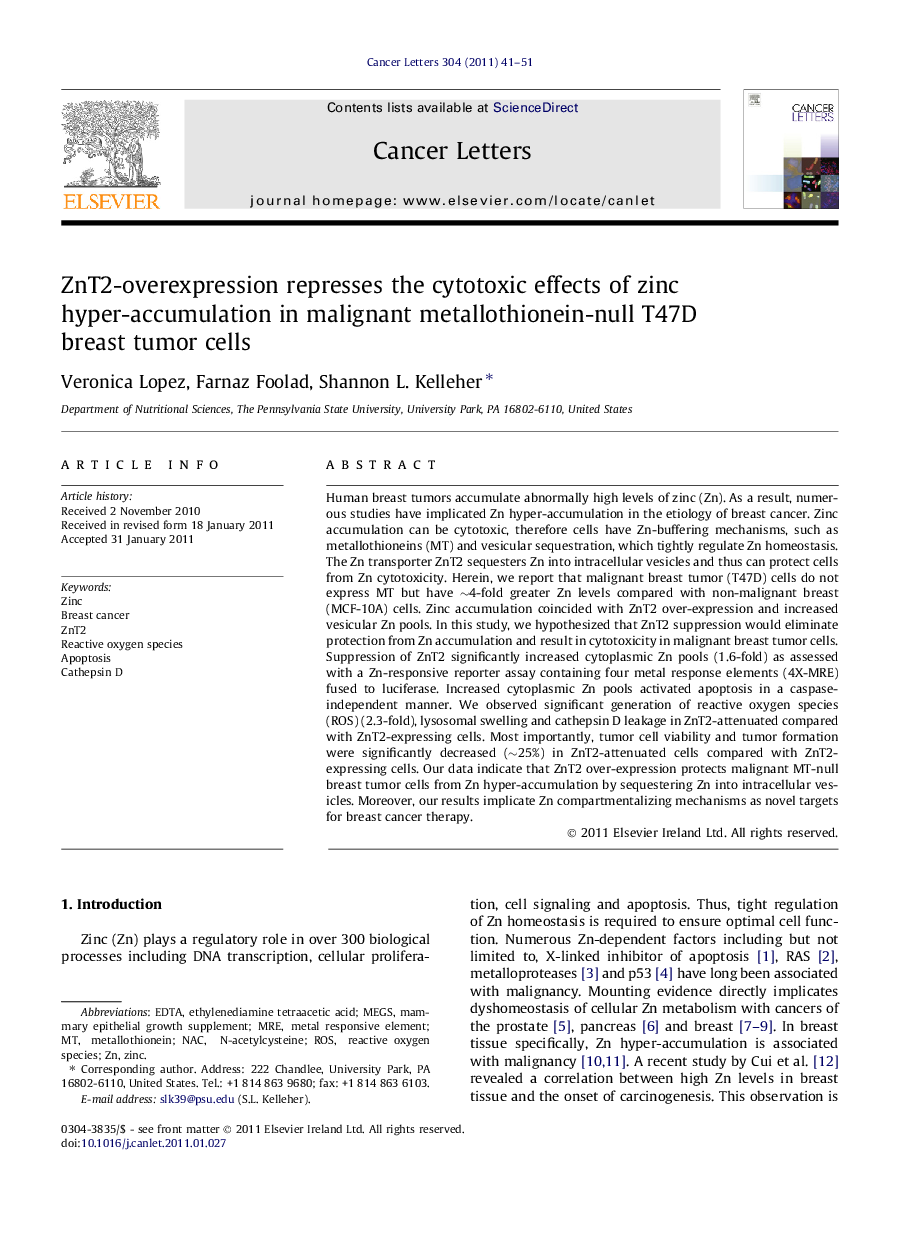| Article ID | Journal | Published Year | Pages | File Type |
|---|---|---|---|---|
| 2116414 | Cancer Letters | 2011 | 11 Pages |
Human breast tumors accumulate abnormally high levels of zinc (Zn). As a result, numerous studies have implicated Zn hyper-accumulation in the etiology of breast cancer. Zinc accumulation can be cytotoxic, therefore cells have Zn-buffering mechanisms, such as metallothioneins (MT) and vesicular sequestration, which tightly regulate Zn homeostasis. The Zn transporter ZnT2 sequesters Zn into intracellular vesicles and thus can protect cells from Zn cytotoxicity. Herein, we report that malignant breast tumor (T47D) cells do not express MT but have ∼4-fold greater Zn levels compared with non-malignant breast (MCF-10A) cells. Zinc accumulation coincided with ZnT2 over-expression and increased vesicular Zn pools. In this study, we hypothesized that ZnT2 suppression would eliminate protection from Zn accumulation and result in cytotoxicity in malignant breast tumor cells. Suppression of ZnT2 significantly increased cytoplasmic Zn pools (1.6-fold) as assessed with a Zn-responsive reporter assay containing four metal response elements (4X-MRE) fused to luciferase. Increased cytoplasmic Zn pools activated apoptosis in a caspase-independent manner. We observed significant generation of reactive oxygen species (ROS) (2.3-fold), lysosomal swelling and cathepsin D leakage in ZnT2-attenuated compared with ZnT2-expressing cells. Most importantly, tumor cell viability and tumor formation were significantly decreased (∼25%) in ZnT2-attenuated cells compared with ZnT2-expressing cells. Our data indicate that ZnT2 over-expression protects malignant MT-null breast tumor cells from Zn hyper-accumulation by sequestering Zn into intracellular vesicles. Moreover, our results implicate Zn compartmentalizing mechanisms as novel targets for breast cancer therapy.
